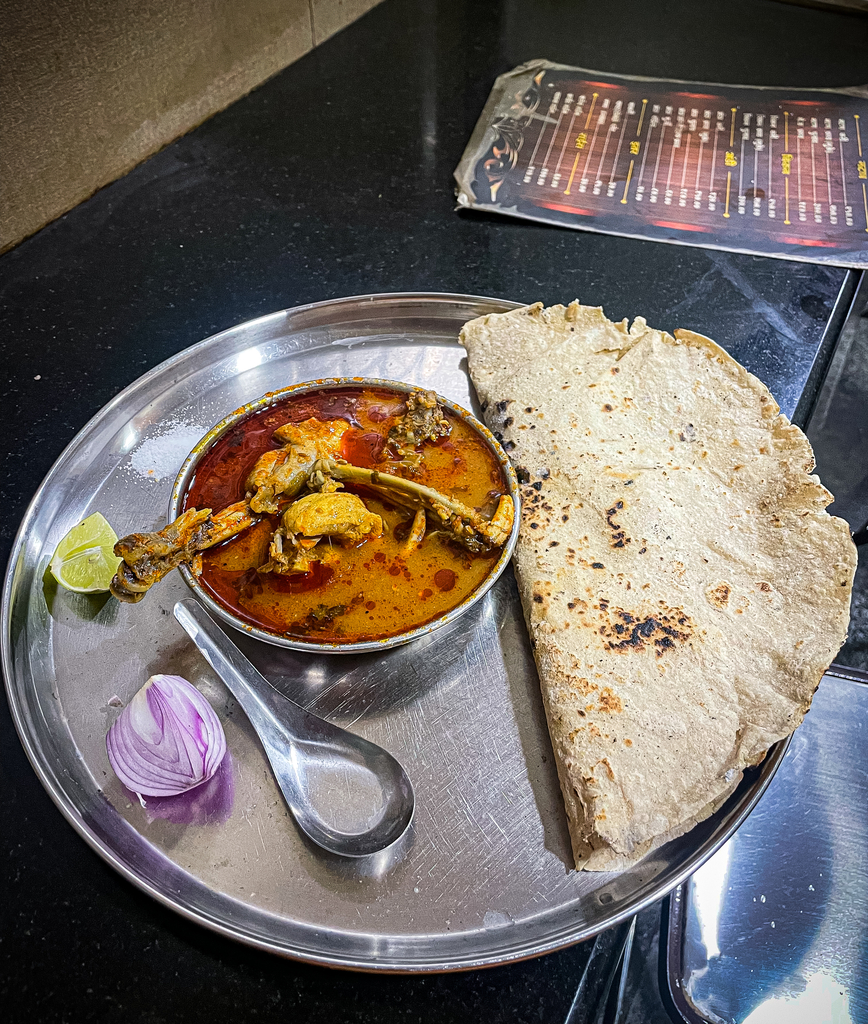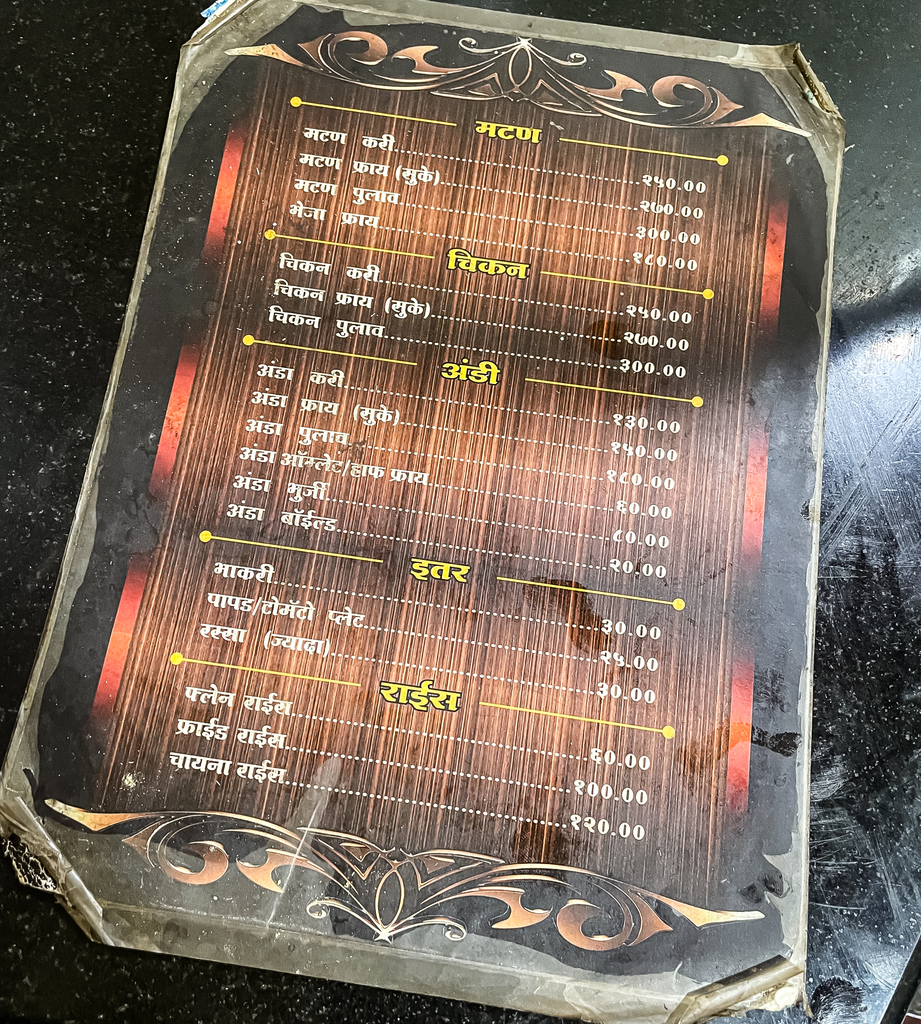Nagpur Hotel – Hidden Gems of Pune


I visited Pune after many years and first stop was Nagpur Hotel in Sadashiv Peth. In India, a hotel is not just a lodging place. Many smaller restaurants call themselves hotels. Evolution of the food and beverage industry pretty much happened in hotels, which were known for both lodging and food. For the longest of time, there were hardly any standalone restaurant culture and hotels were famous for sit down restaurant dining. Hence the name hotel became associated with sit down dining. When the standalone restaurant culture started evolving in India, many restaurants called themselves hotels to show that they have sit down dining. The word stuck and is still quite common across both bigger and smaller cities.
Sadashiv Peth is in the older part of Pune. The peths were localities developed by the Peshwa rulers and Pune has 17 of them. Most are Maharastrian hindu dominated and some have a big brahmin presence. The Peshawar were Deshastha Brahmins. Nagpur Hotel does Saoji food. Saoji or Savji is a Maharashtrian Kshatriya community mostly centred in the city of Nagpur and are famous for their spicy meat dishes. Nagpur Hotel has been around since the 80’s and not much has changed since them. They serve a limited menu of 7-8 dishes, steamed rice and jowar chi bhakri. The highlight is the mutton rassa and the mutton fry.
Goat and sheep, both are referred to as mutton in India. Though goat is the preferred meat in most parts, as lamb has a strong gamey flavour, and is not preferred by most Indians. Pune and it’s surrounding areas of Ahmednagar and Satara are an exception. Most hindus here are followers of goddess Bolhai and eat sheep meat. Goat meat is forbidden according to the local custom here. The main Bola Wade temple is around 25 kilometres from Pune, but many villages in the region have smaller temples of goddess Bola outside their villages as the Devi is considered as a gramrakshak (village protector). Meat from domesticated milk producing animals is forbidden. Goat milk is prevalent in this region, hence the meat is not consumed. Sheep are reared for meat in the region. Cow and buffalo is anyway not eaten by most hindus across India.
Saoji food is known for its chilli fieriness and mutton is the meat of choice. Though eating chillis is more a personal choice and spice levels vary from family to family and person to person. Generally most regions in India have more masala (spices) than chilli spicy. The chilli levels are usually medium and not very high. But that changes when you eat in regions where chillis are grown. In general, food is super chilli hot in these regions. Nagpur in the Vidharba region of Maharashtra is one such region famous for chilli production, especially the Bhiwapur chilli.
The Saoji rassa is a typical dish. Mutton cooked with a browned onion paste, ginger, garlic, loads of red chilli and the delicious black Saoji masala paste. The Saoji masala is made using freshly roasted whole spices, black peppercorn, dry coconut, coriander and cumin seed and rice powder. All these are roasted till the mixture turns dark in colour and then made into a paste. Interior parts of Maharashtra have no access to fresh coconut as they’re far from the coast and copra (dry coconut) is used in traditional recipes.
The gravy of the Saoji mutton is dark in colour, thin and watery, with lots of oil floating on top. The oil floating on top, is not because more oil is used, but rather the technique applied. Most Indian gravies where tomato is not used, you’ll find oil floating on top. Tomato is a rather recent introduction in the Indian culinary scene and was brought in by the Portuguese in the 1600’s. Though tomato is now an integral part of Indian cooking, there are still regions where it’s not used in traditional recipes.


The Bholai mutton is more a Pune phenomenon and is not very common in the Vidharbha region. That makes Saoji food at Nagpur Hotel and in Pune unique. As sheep meat is used and not goat. I first chanced upon Nagpur Hotel in 2012 when roaming in Sadashiv Peth. The food was spicy but delicious and they’ve maintained their standards. The seating here is typical and unlike normal restaurants. There are ledges on both sides of the restaurant and one sits facing the wall to eat. They’ve recently tiled the walls and the place looks neat and clean, but thankfully hasn’t lost its earlier charm. A special mention also for the bhakri which is made from jowl and not rice and is cooked on charcoal, giving it a lovely smoky flavour.
A must visit if you’re in this side of Pune.
Happy hunting and chowder on!